FABRIC OF TIME
![]()
UNRAVELING THE HISTORY
OF VELMA VINTAGE
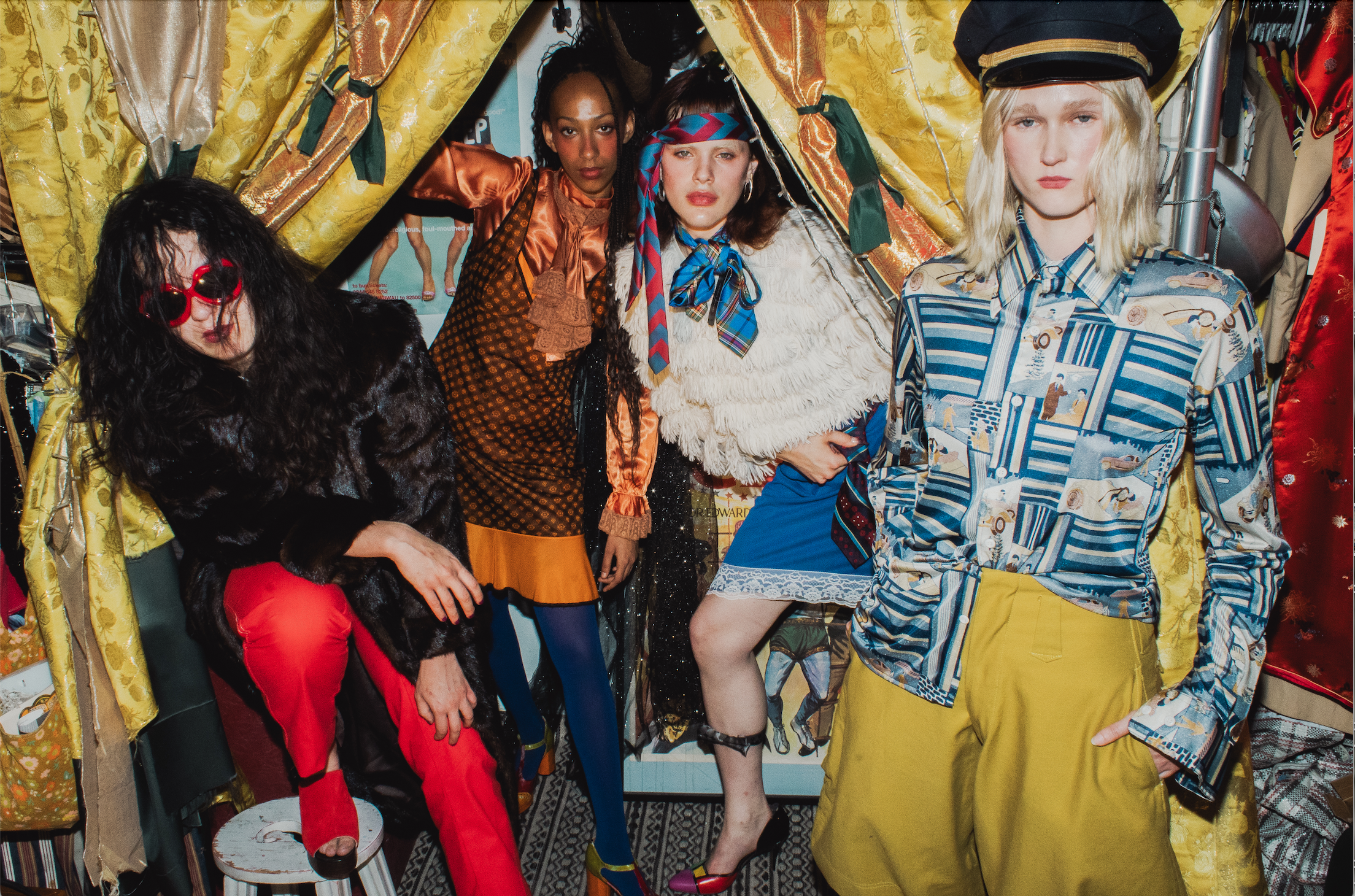
11.23.2024
“I don’t really believe in ghosts but they’re here. Have you noticed them?”
91 North 1st Street is no ordinary place. Located on a stretch of overpriced cafes and exposed brick apartments, the property is situated at the heart of Brooklyn’s trendiest borough. A wet dream for millennial creatives who want their matcha latte, gallery opening, and punk show all on the same block, Williamsburg caters to an increasingly commercial demographic. Yet among the renovated studios and artfully disguised wealth is the loft on 1st: a hidden gem with a rich history that predates the neighborhood’s gentrification.
Currently home to Velma Vintage, 91 North 1st Street marks a rarity as it is one of the only spaces in the city that remains under the protection of New York’s Loft Law. Passed in 1982, the Loft Law granted protection and rent stabilization to thousands of residents who were squatting in commercial and manufacturing zoned buildings. After steep prices caused a mass exodus from Manhattan, many artists relocated to Brooklyn to shack up in emptied warehouses and abandoned industrial spaces that were not constructed, intended, or legalized for residential use. The Loft Law allowed these properties to exist as both commercial and housing sites— giving many artists the freedom to develop multipurpose studios and merge their work space with their homes.
Lofts developed during this era are not only coveted for some seriously unique DIY infrastructures, they are also credited as the birth places for avant-garde aesthetic movements, independent artists, and experimental communities.
I spoke to Lydia Rockett, the founder of Velma Vintage, about the lineage of 91 North 1st Street and the layers of history that have passed through its walls: from Keith Haring’s early work, a burlesque acrobatics duo, and her great-uncle’s military clothes.

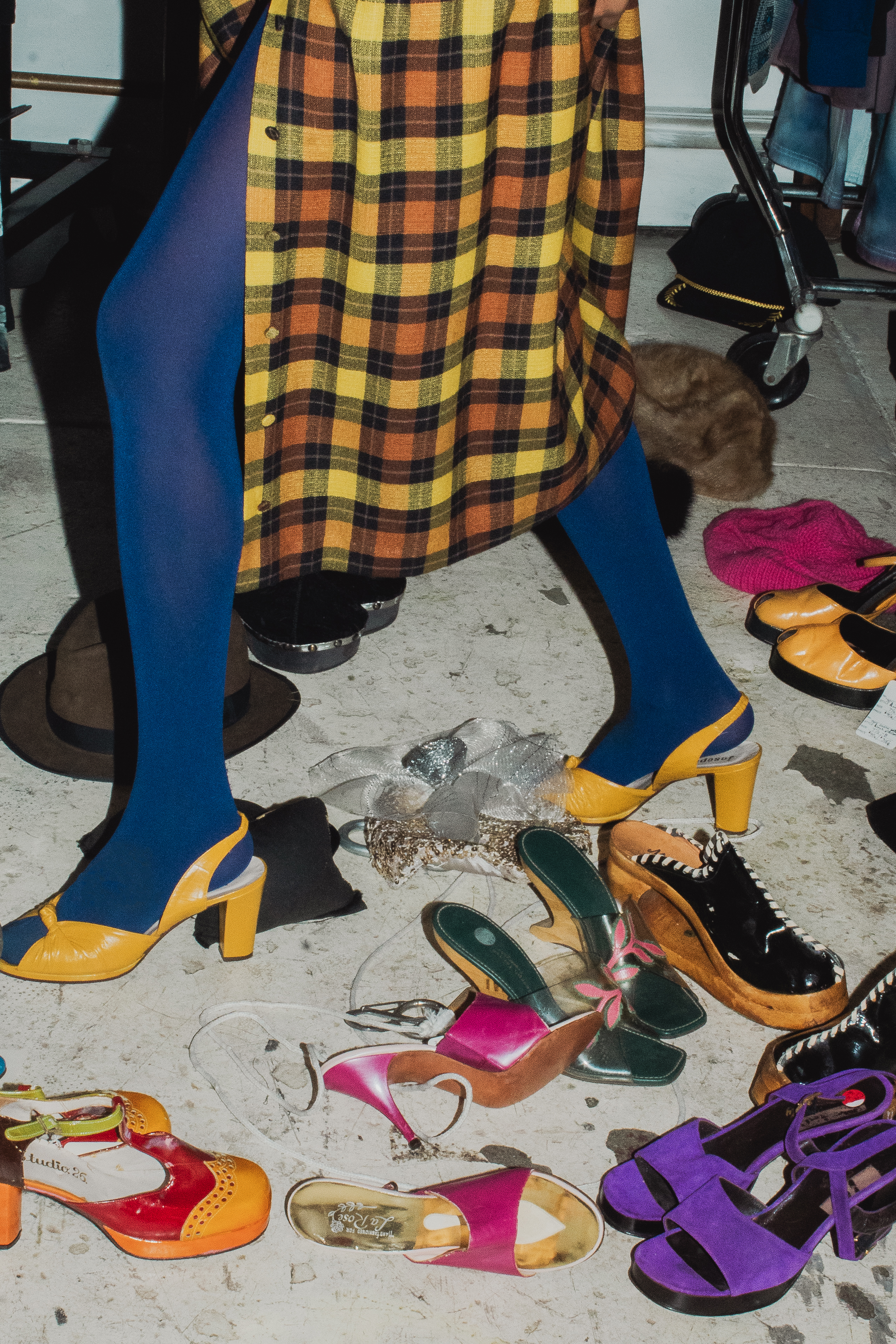

Lydia began Velma Vintage in 2009 as an Ebay shop that later gained a cult following at the Hell’s Kitchen flea market. But her knack for finding wearable treasures goes all the way back to her childhood. Between racks of retro jumpsuits and silken bloomers, Lydia describes “getting bags of hand-me-down clothing, going through it and picking out the good stuff” with her sister as early as kindergarten. Since the shop itself is also named after her grandmother Velma, I ask Lydia if heritage feels like a connective tissue in the charm of the space - both the vintage garments and the loft itself have been passed down through decades and lives, accumulating the patina of nostalgia that makes its atmosphere so dreamlike. In the age of fast fashion microtrends and mass disposability, Lydia agrees that there is joy in clothing that has endured the test of time:
“I like that all of these things were somebody’s favorite pieces of clothes or else they wouldn’t still be here… Back when you could only buy a certain limited amount of clothes, you picked favorites that resonated with you. I love how all of these clothes resonated with somebody [enough] to keep them. And now they're going to resonate with somebody else.”
Q: Favorite vintage piece?
A: “I almost wore it today. An original 1970s Betsey Johnson sweater. I also have a Diane Von Furstenburg that fits me and makes me feel like a WOMAN! It’s a black jersey dress- wowwww! Eons ago, I was at the Democratic Club in DC and had a Senator hit on me wearing that dress. Or my grandmother’s wedding dress. It lives at my house because it was my wedding dress. Like liquid silk...”
The loft itself has withstood the turn of the century due to its historical significance. In 1991, curator and community organizer Annie Herron converted the property from a manufacturing warehouse into the first art gallery in Williamsburg. Appropriately named Test Site Gallery, the space hosted group shows for emerging and undiscovered artists of the time: a still ‘underground’ Keith Haring and celebrated bricolage sculptor / instrumentalist Ken Butler among them. Because the rest of Williamsburg was still just “burnt out buildings,” Test Site was a hub for progressive arts and a catalyst for the emergence of Brooklyn’s DIY Art Scene. There is little to nothing about Test Site online - Lydia’s learned all she knows through oral history and word of mouth.
Most of this lore has been relayed to Lydia by Tanya Gagné. A self taught trapeze performer and one-half of the world renowned burlesque duo the Wau Wau sisters, Tanya is the nominal owner of the loft. During her residency at 91 North 1st Street, Gagné turned the space into The Trapeze Loft, a performance venue and community space for silks, acrobatics, hula hooping, contortion, and the circus arts. Lydia shares:
“When I found Tanya is when I found this place. She is now my other partner solidly in life. [Tanya] is magic beyond magic…She’s had this space since Test Site. She saved it to be this creative thing, teaching trapeze in it. She was having trouble managing this space, filling it and paying its rent, so I came in and helped her. Changing things over and interviewing people, finding people to come and stay and making sure it doesn’t get lost to developers. I helped her save it. I was like, this place needs to be saved. It can’t be lost.”
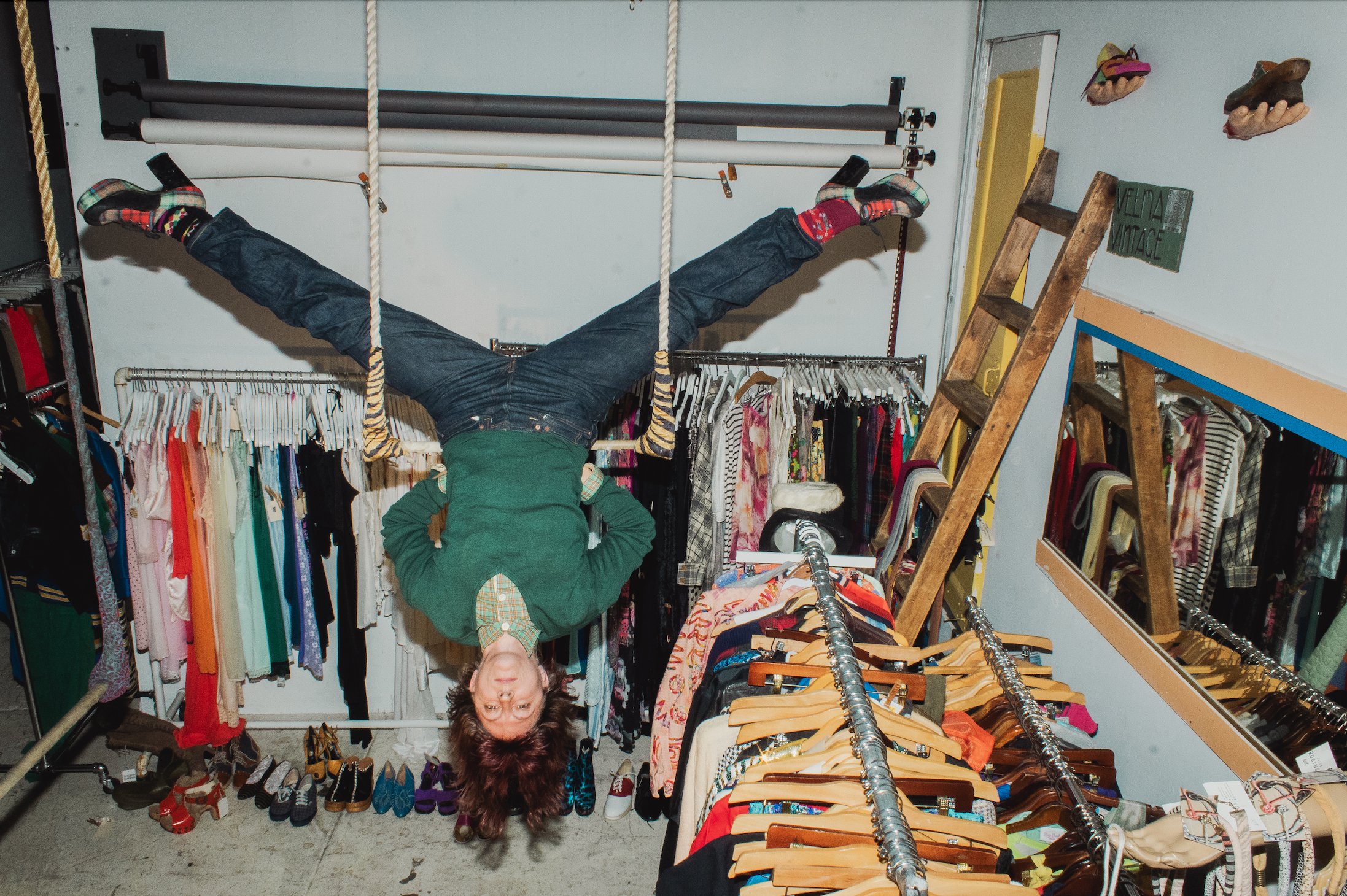
Pictured: Lydia Rockett
Elements of the loft’s previous iterations remain intact. Hanging from the wooden rafters are two trapeze fixtures for Lydia to practice after hours and occasionally host performances. There is a theatricality and a fantastical energy to the space. Entering those doors feels something like falling down a rabbit hole or a time warp, dreaming sideways into a dollhouse or sneaking into the wardrobe of an Old Hollywood film set. In contrast to the sterile walls and clean cut look of most modern businesses, the shop appears remarkably human, labyrinthine, and alive. Creaky ladders lead to nowhere. Army boots tap dance from the walls. Kimonos swell from armoires. Makeshift nooks and crannies collapse a menagerie of style eras into one.
This lived-in feel doesn’t come from nowhere. Along with continuing its history as a trapeze performance space, the loft maintains its tradition of multipurpose use for artists in residence. Lydia narrates the long line of tenants who have called the bed/bath/kitchen space behind the shop home. “There were always people living here” she says, including Tanya, Tanya’s niece, students, curators, couch cruisers, you name it. Artworks by the previous tenant, Elizabeth Hackenberg, still hang from the walls: soft textile sculptures like nests, bundles, or dreamlets, gestures of the past that cling and linger. The newest resident is an aspiring writer named Talia (pictured below). When I come to visit the loft, Talia’s been living there barely a week. Just as keen as I am on learning its mythology, she takes a seat next to me while Lydia recalls the instances of kinship and community that literally fill the shop.
The Velma Vintage collection is sourced from traveling gifts and opportune offerings. Since Lydia has been doing this for years, people come to her with all kinds of rarities and relics. A large collection of burlesque wear is credited to “costume dumps from the trapeze family,” while her exquisite arsenal of vintage suiting is thanks to an old tuxedo shop clearing out its contents. Most recently, she acquired a large inventory of deadstock skatewear from the 80s and 90s when her hometown skateboarding shop lost their lease and phoned her to give the clothing a new home. Other pieces are gathered through selective curation. We swoon over traditional workwear pants acquired from her favorite flea market in Japan, a “non-negotiable” stop when she goes to visit her partner’s family there.
Lydia shares that “there’s a lot of my personal items coming here too. This was my great-grandmother’s, and this was so-and-so’s… it all came from somebody I knew.” The beauty of Velma Vintage is its patchwork of preservation. Gathering so much history in one space, the shop weaves a bricolage tapestry of circulation and community, inhabitation and inheritance. Velma’s gives new function to old infrastructure and new life to old clothes. A hand-me-down home and a shape-shifting treasure trove of style.
“I keep the things I like from people. I have a lot of military clothes that I wear from my uncle who was in the Navy. I grew up in the grunge era where it was that old workwear, like Dickies and old military. I just like that style. Things I’ve kept that I will wear. These people pass away and you want everything of theirs because they're gone now. And you can't possibly have it all.
In this industry, hoarding is a big problem. *laughs* As you can see.”

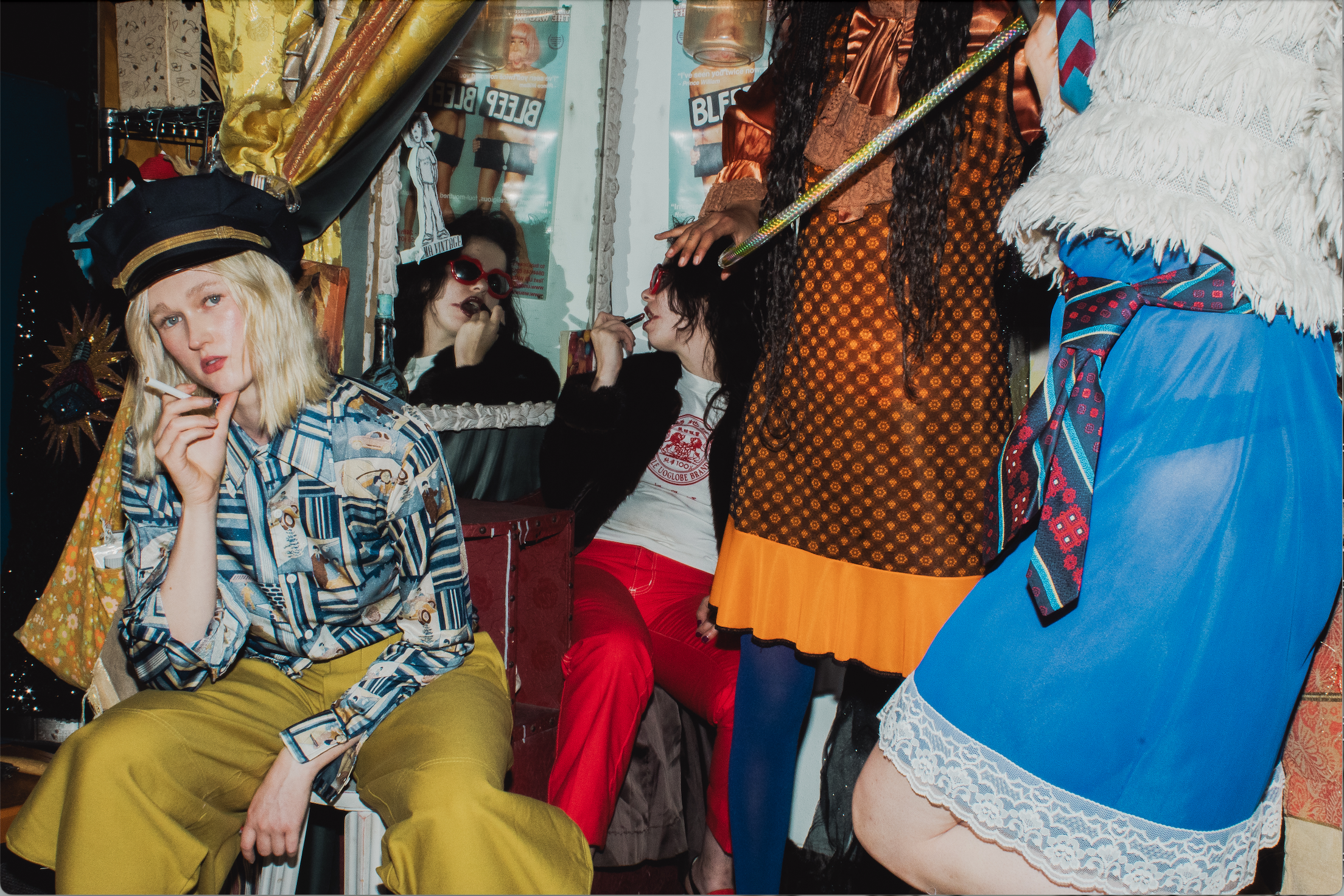

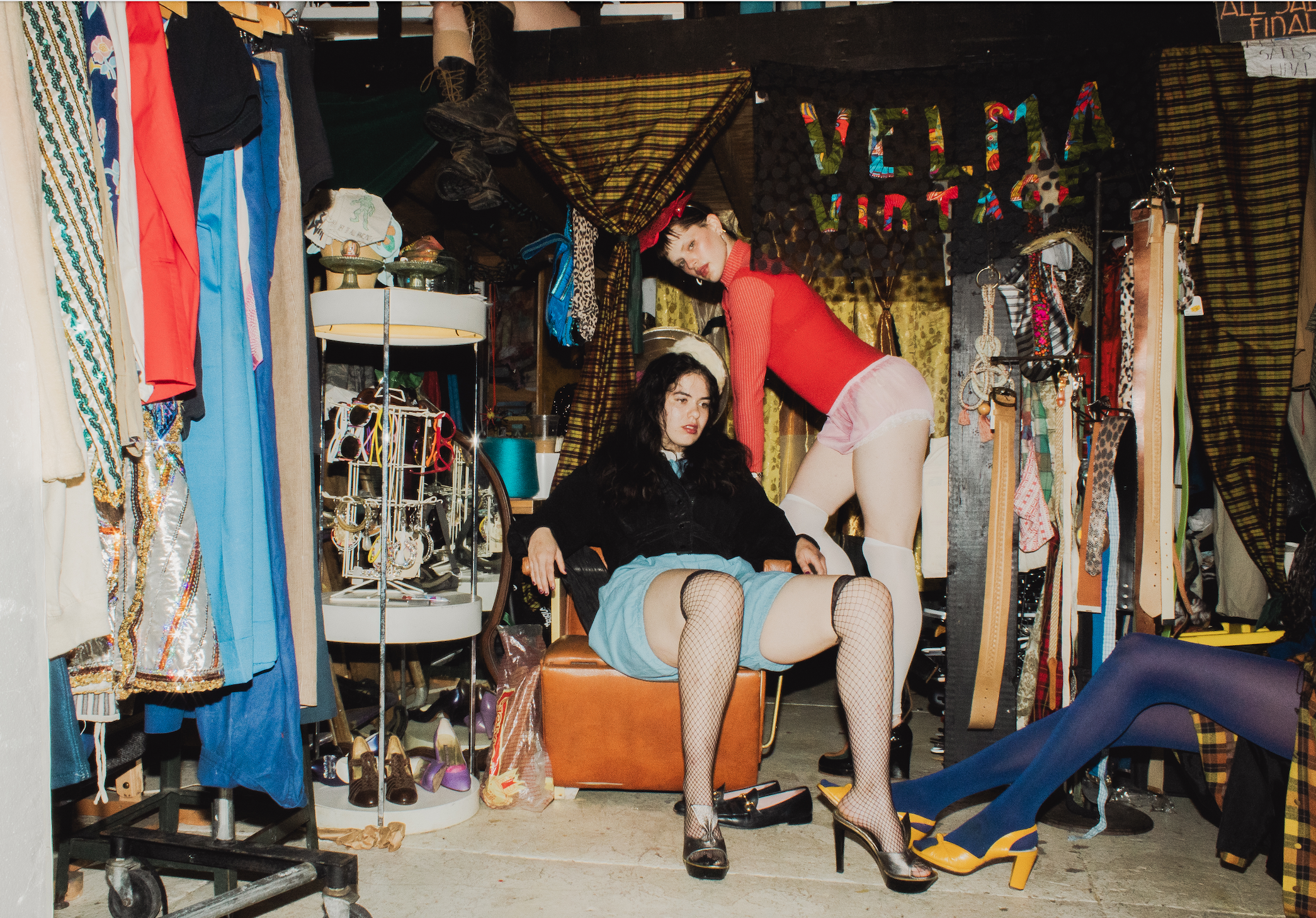
Words Lily Moskowitz
Photography Kaden Bard Dawson
Garments Provided by Velma Vintage
Creative Direction Lily Moskowitz
Styling Lydia Rockett & Lily Moskowitz
Models Marianna Nouss, Christiane Nahu, Augustine Ezra & Talia Rosenthal
